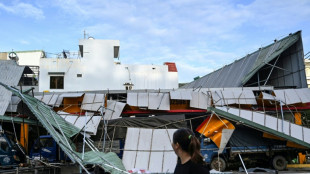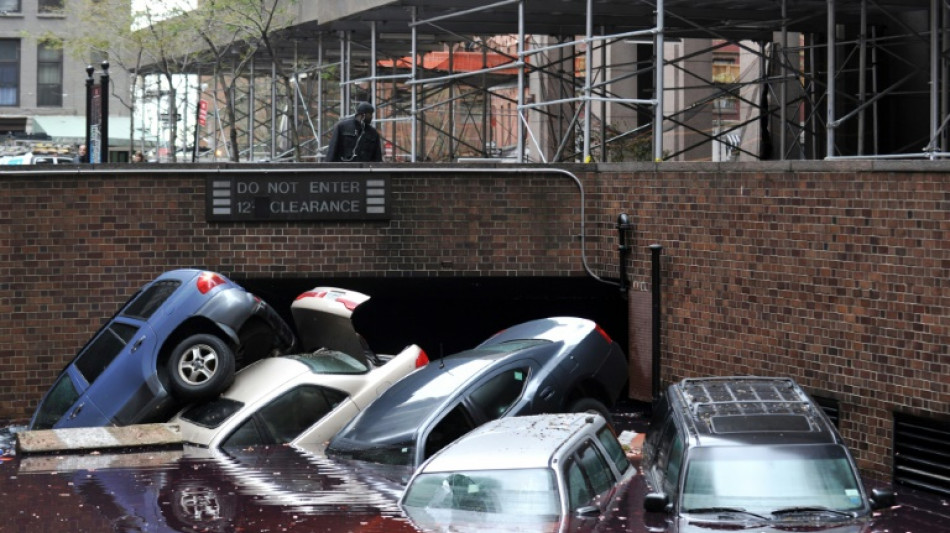
-
 Syrian president arrives in US for landmark visit
Syrian president arrives in US for landmark visit
-
Cyndi Lauper, Outkast, White Stripes among Rock Hall of Fame inductees

-
 Fox shines in season debut as Spurs down Pelicans, Hawks humble Lakers
Fox shines in season debut as Spurs down Pelicans, Hawks humble Lakers
-
New Zealand edge West Indies by nine runs in tense third T20

-
 Messi leads Miami into MLS playoff matchup with Cincinnati
Messi leads Miami into MLS playoff matchup with Cincinnati
-
Ukraine scrambles for energy with power generation at 'zero'
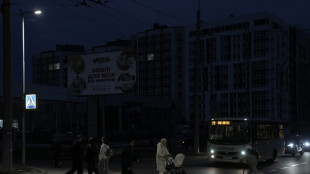
-
 India mega-zoo in spotlight again over animal acquisitions
India mega-zoo in spotlight again over animal acquisitions
-
Messi leads Miami into MLS Cup playoff matchup with Cincinnati

-
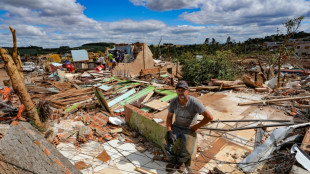 Tornado kills six, injures 750 as it wrecks southern Brazil town
Tornado kills six, injures 750 as it wrecks southern Brazil town
-
Minnesota outlasts Seattle to advance in MLS Cup playoffs

-
 Marseille go top in Ligue 1 as Lens thrash Monaco
Marseille go top in Ligue 1 as Lens thrash Monaco
-
Fourteen-man South Africa fight back to beat France

-
 Atletico, Villarreal win to keep pressure on Liga giants
Atletico, Villarreal win to keep pressure on Liga giants
-
Chelsea down Wolves to ease criticism of Maresca's rotation policy

-
 England's Genge eager to face All Blacks after Fiji win
England's Genge eager to face All Blacks after Fiji win
-
Wasteful Milan draw at Parma but level with Serie A leaders Napoli

-
 Fire kills six at Turkish perfume warehouse
Fire kills six at Turkish perfume warehouse
-
Djokovic pulls out of ATP Finals with shoulder injury

-
 Rybakina outguns world No.1 Sabalenka to win WTA Finals
Rybakina outguns world No.1 Sabalenka to win WTA Finals
-
Norris survives a slip to seize Sao Paulo pole

-
 Sunderland snap Arsenal's winning run in Premier League title twist
Sunderland snap Arsenal's winning run in Premier League title twist
-
England see off Fiji to make it nine wins in a row

-
 Australia connection gives Italy stunning win over Wallabies
Australia connection gives Italy stunning win over Wallabies
-
Arsenal winning run ends in Sunderland draw, De Ligt rescues Man Utd

-
 Griezmann double earns Atletico battling win over Levante
Griezmann double earns Atletico battling win over Levante
-
Title-leader Norris grabs Sao Paulo Grand Prix pole

-
 Djokovic edges Musetti to win 101st career title in Athens
Djokovic edges Musetti to win 101st career title in Athens
-
Rybakina downs world No.1 Sabalenka to win WTA Finals

-
 McKenzie ends Scotland dream of first win over New Zealand
McKenzie ends Scotland dream of first win over New Zealand
-
McKenzie stars as New Zealand inflict heartbreak upon Scotland

-
 De Ligt rescues Man Utd in Spurs draw, Arsenal aim to extend lead
De Ligt rescues Man Utd in Spurs draw, Arsenal aim to extend lead
-
Kane saves Bayern but record streak ends at Union

-
 Bolivia's new president takes over, inherits economic mess
Bolivia's new president takes over, inherits economic mess
-
Edwards set for Wolves job after Middlesbrough allow talks

-
 COP30: Indigenous peoples vital to humanity's future, Brazilian minister tells AFP
COP30: Indigenous peoples vital to humanity's future, Brazilian minister tells AFP
-
Marquez wins Portuguese MotoGP sprint race

-
 Saim, Abrar star in Pakistan's ODI series win over South Africa
Saim, Abrar star in Pakistan's ODI series win over South Africa
-
Norris extends title lead in Sao Paulo GP sprint after Piastri spin

-
 Man Utd have room to 'grow', says Amorim after Spurs setback
Man Utd have room to 'grow', says Amorim after Spurs setback
-
Tornado kills six, wrecks town in Brazil
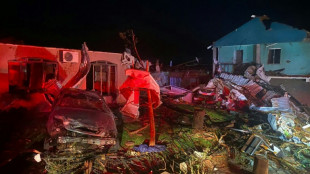
-
 Norris wins Sao Paulo GP sprint, Piastri spins out
Norris wins Sao Paulo GP sprint, Piastri spins out
-
Ireland scramble to scrappy win over Japan

-
 De Ligt rescues draw for Man Utd after Tottenham turnaround
De Ligt rescues draw for Man Utd after Tottenham turnaround
-
Israel identifies latest hostage body, as families await five more

-
 England's Rai takes one-shot lead into Abu Dhabi final round
England's Rai takes one-shot lead into Abu Dhabi final round
-
Tornado kills five, injures more than 400 in Brazil
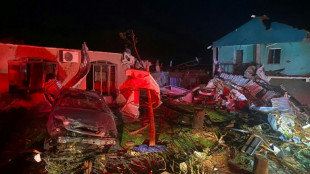
-
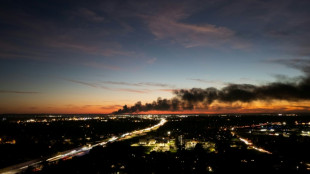 UPS, FedEx ground MD-11 cargo planes after deadly crash
UPS, FedEx ground MD-11 cargo planes after deadly crash
-
Luis Enrique not rushing to recruit despite key PSG trio's absence

-
 Flick demands more Barca 'fight' amid injury crisis
Flick demands more Barca 'fight' amid injury crisis
-
Israel names latest hostage body, as families await five more


A decade post-Sandy, New York vulnerable as ever
Long before Superstorm Sandy devastated New York City and the surrounding region in 2012, scientist Klaus Jacob issued a prophetic report warning city leaders that such paralyzing flooding was imminent.
Then Sandy made landfall on October 29 of that year, leaving well over 100 people dead in the United States, including 43 New York City residents. It caused $19 billion in damages across the metropolis, triggering lengthy power outages, temporarily displacing thousands of people and damaging tens of thousands of residential units.
More than two feet of water flooded into Jacob's own home in a quaint Hudson River town in New York state, an irony he suffered because municipal zoning laws barred him from raising the building enough to avoid such inundation.
"A week after Sandy I got a letter in the mail: 'Now you can raise it,'" recounted Jacob, a geophysicist at Columbia University specializing in disaster risk management.
The experience speaks to the much larger challenges of short-sighted thinking as climate change warnings grow ever-more dire.
Ten years after Sandy left one of the world's cultural and economic powerhouses tragically swamped, Jacob says the city is far from prepared for the coming era of intense storms.
New York received billions of federal dollars and invested in rebuilding. A number of resiliency projects remain in the planning stages while a few, including one to reduce Manhattan's coastal flood risk, are underway.
Jacob said subway repairs that fixed thousands of holes would allow the vital transportation system to fare better in the wake of another Sandy-esque storm.
And the US Army Corps of Engineers recently detailed a $52 billion plan to erect a massive system of storm surge gates and seawalls.
But that will require years of bureaucracy to get approvals, and isn't slated to begin construction until 2030.
- Climate and housing -
An October report from New York's comptroller -- an elected official responsible for scrutinizing the budget -- criticized some city agencies for dawdling, with several projects stalled and billions in federal funding unused and still available.
Last fall's Hurricane Ida meanwhile highlighted the city's persistent frailties, including aging sewer infrastructure.
In a mere hour Ida poured more than three inches of rain onto Central Park -- nearly twice what the city's sewage system is capable of handling -- and, according to Jacob, "the subway system became the default sewer system."
Dozens of people in the region died. Several of the deceased lived in New York City basement apartments that flooded.
If Sandy hit tomorrow "we'd be way worse off," said Thaddeus Pawlowski, an urban designer focused on climate resiliency, who formerly worked at the NYC Office of Emergency Management.
"Our housing situation has gotten so much worse. Our neighborhoods are so much more unequal," Pawlowski told AFP.
New York is facing an acute housing crisis, but a fair proportion of the city's new residencies have been in coastal neighborhoods like Williamsburg and Long Island City. Municipal data mapped by local outlet The City shows some 2,000 new units were built square in the floodplain of Coney Island, a district Sandy pummeled.
The state has bought out some homeowners living in vulnerable neighborhoods, including in Staten Island's Ocean Breeze, where hundreds of homes were purchased and demolished.
"That's a good pilot program, but it's bread crumbs -- we need loaves," said Jacob. "Buying out is not enough. We need to have a place where they can move."
Jacob cited need for denser residential buildings, but emphasized new construction must eye climate risk rather than cater to the real estate industry.
"We don't have any long-term vision, such that short-term measures, like building housing, work together with that long-term vision," he told AFP.
"Without that vision being developed, I think we are just fiddling around forever on the edges."
- 'Massive mobilization' -
Climate experts and political leaders agree there's no silver bullet -- mitigating risk and shoring up resiliency demands sweeping planning and investment in conjunction with neighborhood-scale storm management, like shrub-filled bioswale ditches that filter runoff.
"We are not going to be able to say, 'we did one project and now we are safe forever,'" said Rohit Aggarwala, the city's chief climate officer. "That just is not the way it is going to work."
Pawlowski pointed to the Green New Deal -- a proposed congressional plan to reshape America's climate and economic policy -- as a way forward.
"We need a massive mobilization," he said.
Jacob did say that, unlike some of the United States' low-lying coastal cities like New Orleans, New York has "the luxury of high typography" that should inform building strategies.
Perhaps morbidly, he noted the city's cemeteries occupy its highest points: "We could swap the dead and the living."
Above all, Jacob urged against inertia, saying "either we are psychologically overwhelmed, or the water will overwhelm us."
"Which one do you prefer?"
F.Schneider--AMWN



